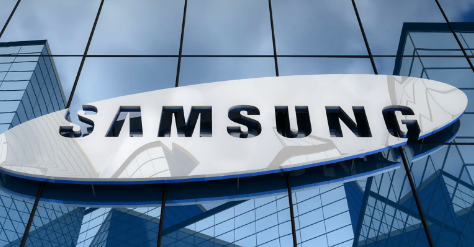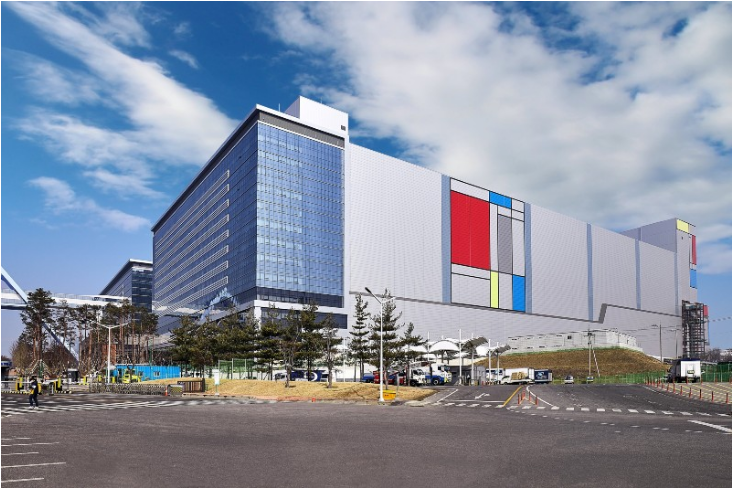Samsung debuts semiconductor innovations at Samsung Tech Day
Samsung Electronics Co., Ltd. today announced several groundbreaking additions to its comprehensive semiconductor ecosystem that encompass next-generation technologies in foundry as well as NAND flash, SSD (solid state drive) and DRAM. Together, these developments mark a giant step forward for Samsung’s semiconductor business.
Unveiled at its annual Samsung Tech Day include:
7nm EUV process node from Samsung’s Foundry Business, providing significant strides forward in power, performance and area.
SmartSSD, a field programmable gate array (FPGA) SSD, that will offer accelerated data processing and the ability to bypass server CPU limits.
QLC-SSD for enterprise and datacenters that offer 33-percent more storage per cell than TLC-SSD, consolidating of storage footprints and improving total cost of ownership (TCO).
256-gigabyte (GB) 3DS (3-dimensional stacking) RDIMM (registered dual in-line memory module), based on 10nm-class 16-gigabit (Gb) DDR4 DRAM that will double current maximum capacity to deliver higher performance and lower power consumption.
“Samsung’s technology leadership and product breadth are unparalleled,” said JS Choi, President, Samsung Semiconductor, Inc. “Bringing 7nm EUV into production is an incredible achievement. Also, the announcements of SmartSSD and 256GB 3DS RDIMM represent performance and capacity breakthroughs that will continue to push compute boundaries. Together, these additions to Samsung’s comprehensive technology ecosystem will power the next generation of datacenters, high-performance computing (HPC), enterprise, artificial intelligence (AI) and emerging applications.”
Advanced Foundry Technology
Initial wafer production of Samsung’s 7nm LPP (Low Power Plus) EUV process node represents a major milestone in semiconductor fabrication. The 7LPP EUV process technology provides great advances, including a respective maximum of 40-percent area reduction, 50-percent dynamic power reduction and 20-percent performance increase over 10nm processes. The 7LPP process represents a clear demonstration of the foundry business’ technology roadmap evolution, providing Samsung’s customers a direct path forward to 3nm.
Powering Server-less Computing
Samsung enables the most advanced providers of server-less computing through products including the new SmartSSD, quad-level cell (QLC)-SSD, 256GB 3DS RDIMM as well as High Bandwidth Memory (HBM) 2 Aquabolt. By accelerating data processing, bypassing server CPU limits and reducing power demands, these products will enable datacenter operators to continue to scale at faster speeds while containing costs.
Samsung’s industry-leading flash memory products for future datacenters will also include Key Value (KV)-SSD and Z-SSD. KV-SSD eliminates block storage inefficiency, reducing latency and allowing datacenter performance to scale evenly when CPU architectures max out. The company’s next-generation Z-SSD will be the fastest flash memory ever introduced, with dual port high availability, ultra-low latency and a U.2 form factor, designed to meet the emerging needs of enterprise clients. Z-SSD will also feature a PCIe Gen 4 interface with a blazing-fast 12-gigabytes-per-second (GB/s) sequential read, which is 20 times faster than today’s SATA SSD drives.
Accelerating Application Learning
A range of revolutionary Samsung solutions will enable the development of upcoming machine learning and AI technologies. The Tech Day AI display highlighted astounding data transfer speeds of 16Gb GDDR6 (64GB/s), ultra-low latency of Z-SSD and industry-leading performance of Aquabolt, which is the highest of any DRAM-based memory solution currently in the market. Together, these solutions help Samsung’s enterprise and datacenter clients open new doors to application learning and create the next wave of AI advancements.
Streamlining Data Flow
Samsung’s new solutions will enable not just faster speeds and higher performance but also improved efficiency for its enterprise clients. Enterprise products on display at Tech Day included D1Y 8Gb DDR4 Server DRAM, which incorporates the most advanced DRAM process, resulting in lower power usage. Samsung’s 256GB 3DS RDIMM also helps to improve enterprise performance and enables memory-intensive servers capable up to 16-terabytes (TB).
Additionally, Samsung’s dual-port x4 PCIe Gen 4 32TB SSD offers 10GB/s performance. Samsung’s 1Tb QLC-SSD presents a cutting-edge storage option for enterprise clients with competitive efficiency when compared to hard disk drives (HDD), while KV-SSD allows server performance to scale even as CPU architectures max out, also providing a competitive TCO, write amplification factor (WAF) improvement and scalability.
Breaking Performance Barriers
With their leading-edge specs, Samsung’s QLC-SSD, Z-SSD and 8GB Aquabolt help high-performance computing clients blast through performance barriers and reach new heights. The 8GB Aquabolt provides the fastest data transmission speed and highest performance of any DRAM-based memory solution on the market today at 307GB/s per HBM cube. QLC-SSD and Z-SSD, both powerful on their own, are also offered in a tiered storage solution that results in a 53-percent increase in overall system performance.
Enabling Future Innovation
Emerging tech requires the most innovative and flexible components. Samsung’s SmartSSD will increase speed and efficiency, and lower operating costs by pushing intelligence to where data lives. Movement of data for processing has traditionally caused increased latency and energy consumption while reducing efficiency. Samsung’s new SmartSSDs will overcome these issues by incorporating an FPGA accelerator into the SSD unit. This allows for faster data processing through bypassing server CPU limits. As a result, SmartSSDs will have higher processing performance, improved time-to-insight, more virtual machines (VM), scalable performance, better de-duplication and compression, lower power usage and fewer CPUs per system.
Unparalleled Product Ecosystem
Samsung’s comprehensive product portfolio with state-of-the-art solutions set new standards for data processing speed, capacity, bandwidth and energy conservation. By leveraging such solutions, data centers, enterprise companies, hyper-scalers and emerging tech platforms are able to configure product solutions based on their requirements and develop exciting new tech offerings such as 5G, AI, enterprise and hyperscale data centers, automotive, networking and beyond.
Samsung will continue to push boundaries in tomorrow’s semiconductor technologies through innovations such as its sixth-generation V-NAND built on a single structure, or with ‘1-stack technology,’ and sub-10nm DRAM with EUV for super-high density and performance.
Experts across the industry, including Apple co-founder, Steve Wozniak, were invited at Samsung Tech Day to address the advancements and challenges in today’s semiconductor market, and offer insights for the future of semiconductors. More than 400 customers, partners and industry influencers attended the event.
在线留言询价

Samsung cuts NAND flash memory production

Samsung is developing next-generation memory chips for large-scale AI applications such as ChatGPT
- 一周热料
- 紧缺物料秒杀
| 型号 | 品牌 | 询价 |
|---|---|---|
| MC33074DR2G | onsemi | |
| CDZVT2R20B | ROHM Semiconductor | |
| TL431ACLPR | Texas Instruments | |
| BD71847AMWV-E2 | ROHM Semiconductor | |
| RB751G-40T2R | ROHM Semiconductor |
| 型号 | 品牌 | 抢购 |
|---|---|---|
| BP3621 | ROHM Semiconductor | |
| ESR03EZPJ151 | ROHM Semiconductor | |
| IPZ40N04S5L4R8ATMA1 | Infineon Technologies | |
| TPS63050YFFR | Texas Instruments | |
| BU33JA2MNVX-CTL | ROHM Semiconductor | |
| STM32F429IGT6 | STMicroelectronics |
- 周排行榜
- 月排行榜
AMEYA360公众号二维码
识别二维码,即可关注


![[News] Samsung Fails to Secure Qualcomm’s 3nm Orders for the Coming Year, Dual Foundry Strategy Postponed [News] Samsung Fails to Secure Qualcomm’s 3nm Orders for the Coming Year, Dual Foundry Strategy Postponed](https://res.ameya360.com//basedata/oldassets/images/20231201/20231201145007_507.png)





















